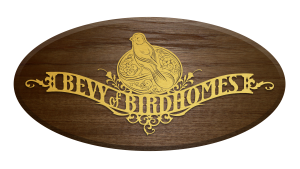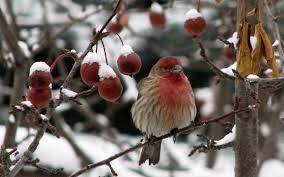The Birds of Christmas
From the scrumptious food eaten, to the leafy green plants hung from the ceiling, birds play a larger role during Christmas then one might think.
When you think of a Christmas bird, what comes to mind? Perhaps you associate a robin with this magical season. This may have something to do with the fact that these birds are commonly displayed on Christmas cards; however, you may not know the back story revealing how robins were able to beat out hundreds of other species to receive such a grand title! It’s quite simple really. Robins have a long-standing reputation dating clear back to 1544 of being significantly more sociable with humans during the winter-time and, in contrast, becoming scarce during the summer.[i] Perhaps this phenomenon can be explained by a massive and decadent summer bird home in the Hamptons, (flying room only) but whatever the reason, robins have managed to brave the blistery cold while looking picturesque in an effort to secure their prime position upon thousands of Christmas cards.
Another bird that may come to the forefront of the mind during Christmas, and imprints a jingle with hard to remember lyrics on our brains, is, of course—a partridge—that just happens to be in a pear tree! Not only was I surprised to learn that a partridge is anything other than a singing family, I also discovered that the whole 12 days of gifts presented during this song were referring to birds[ii]; who knew—apparently not me! Sadly, images of young maidens milking cows, and giant leaping frogs now have to be erased from years of memory!
These birds are commonly thought of in connection with the Christmas season; however, a little plant we love to display overhead—(depending, of course, on who will walk underneath) actually connects all birds to Christmas in a rather unusual way. You may not think it’s as romantic to kiss under the “little dung twig”, which is the actual interpretation of the name mistletoe. And how did it get such a disgusting sounding meaning? Well, mistletoe does not grow on the ground, but rather springs forth on tree branches through bird poop![iii] Yes, I said poop! The seeds have passed through the digestive tract of the bird, and landed on the branch of a tree, and voila, the mystical plant begins to grow! One bird’s poop is another man’s….well you get the picture! Despite mistletoes humble beginning, it is believed to possess a lot of sought after powers and, of course, a great legend.[iv] So, the next time a bird poops on your head, just remember, that poop may just score you some action next Christmas!
Lastly, birds even contribute to our beautiful Christmas trees! The first artificial tree was made out of dyed goose feathers. And, although it may be sad to think that geese were stripped of their beautiful feathers to create a decoration for us, just remember that artificial trees are a way we can ensure our birds remain safe this Christmas season. This is because evergreen trees contain harmful substances if swallowed in some parrot species. Another concern with your trees is the lights and shimmering ornaments which can cause curious birds a myriad of problems if they decide to go for a little taste.[v]
Birds give us so much beauty and enjoyment year round, but especially during the Christmas holiday. Make sure you keep your pet birds safe by avoiding some of these harmful plants:
- Holly
- Poinsettias
- Mistletoe
- Christmas trees and live wreaths
- Christmas Cactus
And, we hope you and your pet birds have a very Merry Christmas, and enjoy all the wonderment that a Christ centered Christmas can bring.
[i] Naish, Darren. “How Robins Became the Birds of Christmas.” Scientific American Blog Network. 20 Dec. 2014. Web. 19 Dec. 2015.
[ii] “The 12 Birds of Christmas.” 12 Birds of Christmas. Web. 19 Dec. 2015.
[iii] “Why We Kiss Under the Mistletoe.” Today I Found Out. 3 Dec. 2010. Web. 19 Dec. 2015.
[iv] “Mistletoe Its History, Meaning and Traditions.” The Holiday Spot. Web. 19 Dec. 2015.
[v] Kalhagen, Alyson. “Holiday Plants Toxic to Pet Birds.” about. Web. 19. Dec. 2015.




